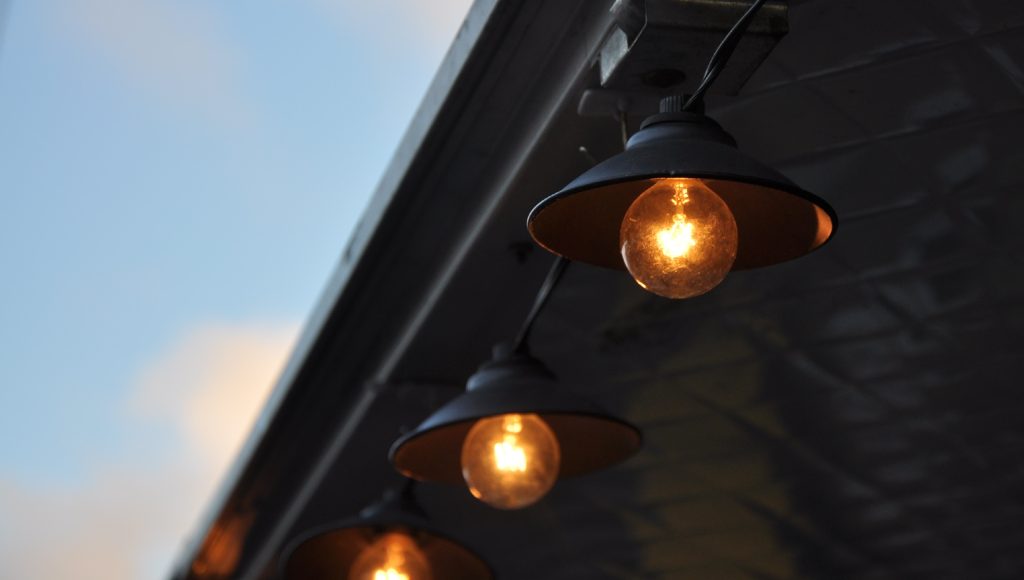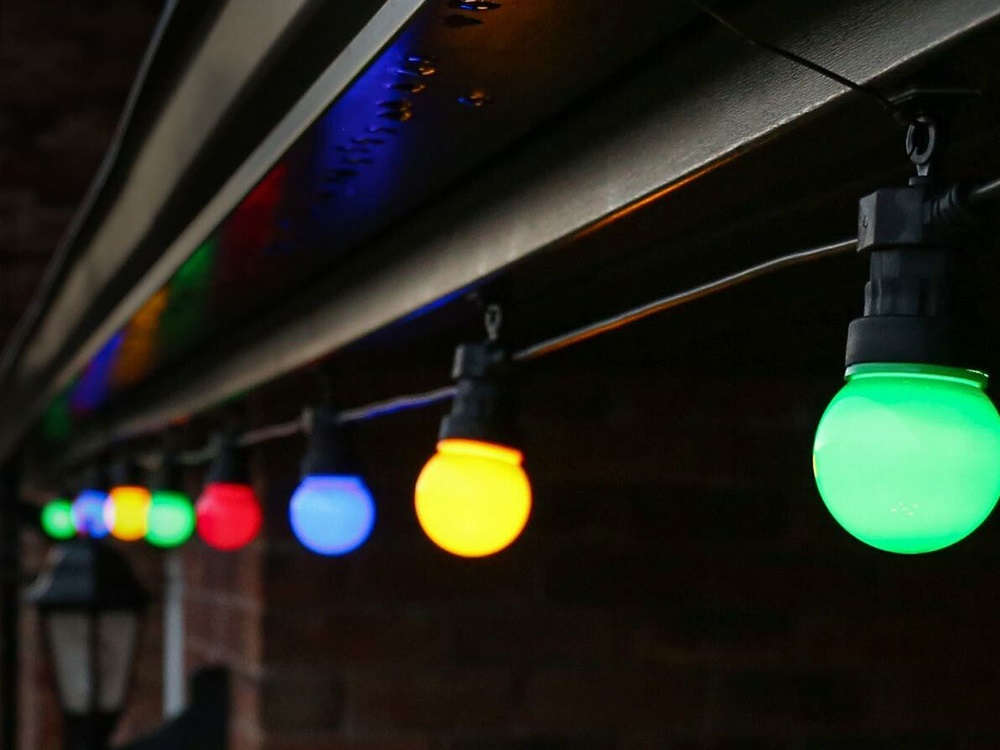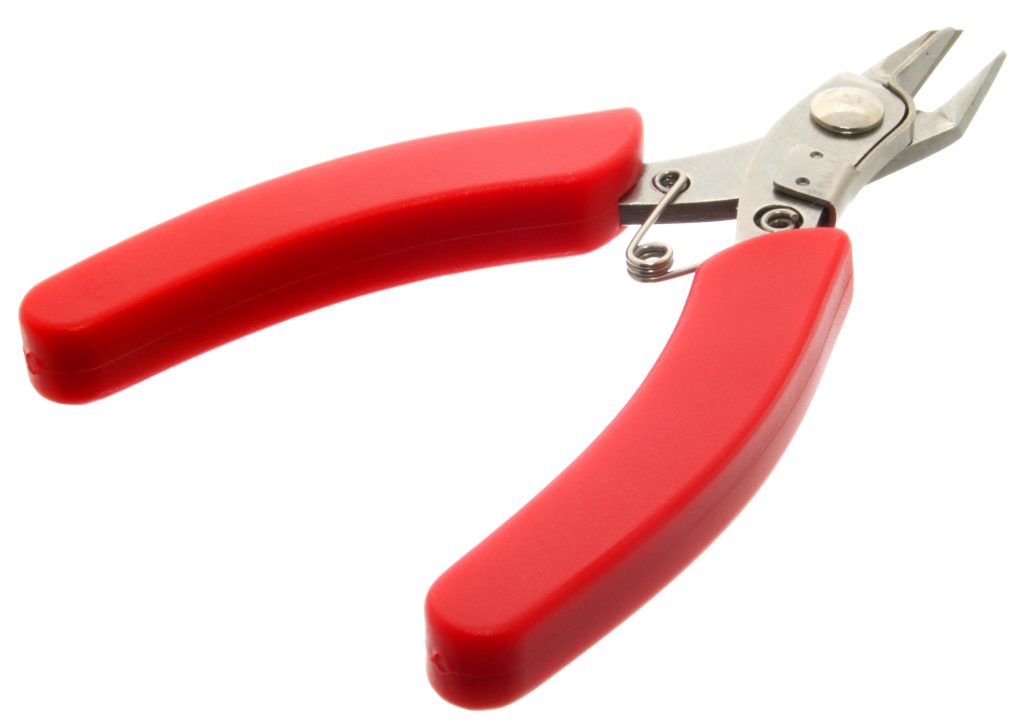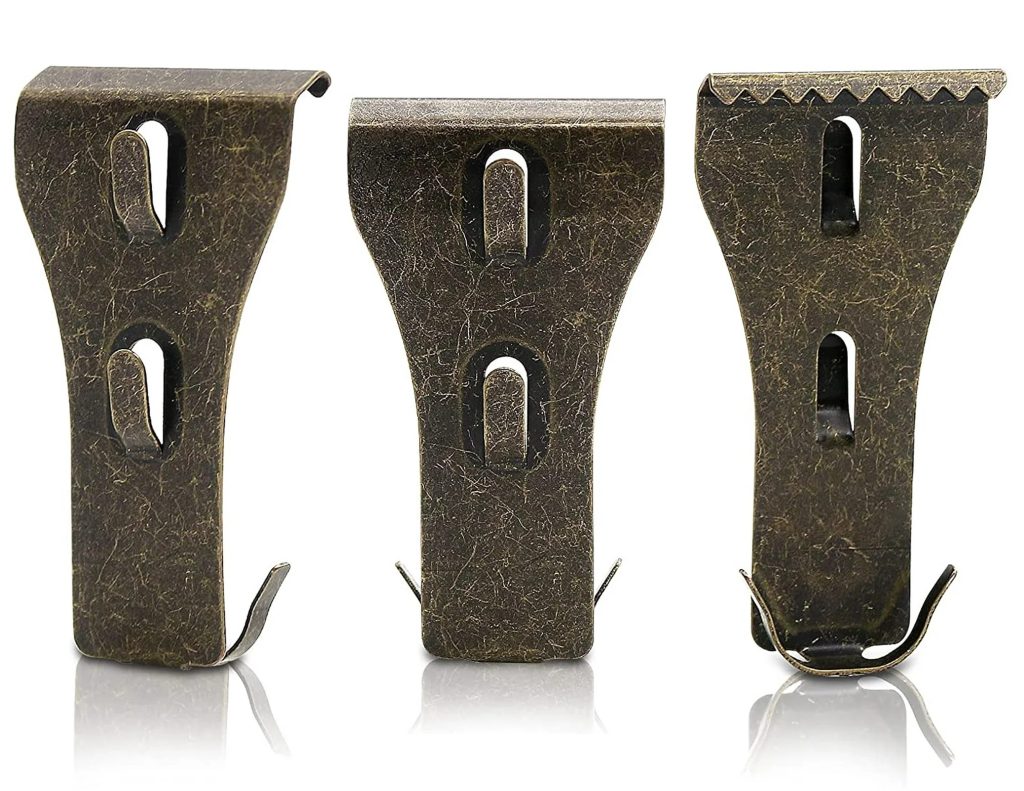Practical Guide for Attaching String Lights to Your Home
Light Up Your Life: An Introduction to String Lights
String lights, often affectionately referred to as fairy lights or bistro lights, are small light bulbs linked together by a long strand of wire. This delightful form of lighting has transcended its traditional holiday confines and is now a familiar sight all year round. Whether adding sparkle to festive occasions or illuminating cozy evenings on the patio, these versatile and enchanting luminaries cast a warm, inviting glow wherever they go.
The magic of string lights lies in their ability to transform any space into an enchanting retreat. They can lend an air of romance to a garden party, turn your backyard into an alfresco dining destination worthy of a five-star restaurant, or simply provide soft lighting for quiet nights under the stars.
As landscape lighting, they artfully highlight architectural features and draw attention to your favorite plants. Besides their aesthetic appeal, string lights can also be a practical addition to your home’s landscape lighting design. They provide an economical way to brighten up dark corners and increase visibility in outdoor areas for safer navigation after sundown. You could also use them indoors as ambient lighting or as accent features in interior design.
The Art of Glow: Why Proper Installation Matters
While string lights are relatively simple devices, proper installation is paramount both for achieving the desired aesthetic effect and ensuring safety. Inappropriately installed string lights may pose hazards such as electric shocks or fire risks if not handled correctly.
The first step towards safe installation is choosing the right type of string light for your specific application. Outdoor-rated landscape string lights are designed with weather-resistant features that make them suitable for outside use, whereas indoor versions may not have these protective characteristics.
Depending on how you plan on using them (such as wrapping them around tree trunks or draping them across a pergola), you may need to consider factors such as the length and flexibility of the string lights, their brightness level, and whether they are solar-powered or require an electrical outlet.
Once you’ve selected your landscape string lights, it’s important to carefully plan your installation. This includes measuring the space where you’ll hang the lights to ensure that you have enough of them for your project, as well as checking that there are suitable structures available for secure attachment.
Proper installation involves following safe practices when working with electrical devices. This means unplugging or turning off the power before starting work and using insulated tools if necessary. By paying attention to these details during installation, you can create a beautiful and safe lighting display that brightens up your home’s landscape.
Understanding Different Types of String Lights
In your quest to illuminate your home with the warm, enchanting glow of string lights, the first consideration will undoubtedly be the type of lighting that best suits your needs. With a multitude of options available, understanding the distinctive characteristics and uses of each type offers an invaluable starting point.
Incandescent vs LED String Lights: Pros and Cons
The traditional charm of incandescent string lights remains an attractive choice for many homeowners. Incandescent bulbs are known for their warm, soothing light that can craft a cozy ambiance with ease. These classic landscape string lights offer a hint of nostalgia and romance, perfect for intimate backyard gatherings or simply a tranquil evening outdoors.
However, incandescent bulbs tend to consume more energy than their contemporary counterparts – LED string lights. Additionally, they have shorter lifespans and may require frequent replacements. Heat generation is another factor to consider, as these bulbs can become quite hot after prolonged use, which may pose safety risks.

Conversely, LED string lights are renowned for their energy efficiency and longevity. They stay cool to the touch even after hours of usage, which makes them safer, especially in households with children or pets. Their bright and vibrant light also ensures excellent landscape lighting in larger spaces.
The primary drawback with LEDs centers on their higher initial cost compared to incandescent bulbs, but this is generally offset by lower running costs over time due to superior energy efficiency and durability. The quality of light from LEDs can sometimes also seem harsher or colder, but advancements in LED technology are rapidly narrowing this gap.
Solar-Powered String Lights: How They Work and When to Use Them
Solar-powered string lights present a sustainable choice for those seeking environmentally friendly alternatives without compromising on aesthetic appeal. These innovative landscape lighting devices absorb sunlight through solar panels during the day, convert it into electrical energy, and store it in rechargeable batteries.
At dusk, they light up your space using this stored energy. Not needing a power outlet gives you the freedom to install these lights in any part of your garden or yard. Once installed, they require minimal upkeep and have zero running costs. They make an ideal choice for places with ample sunlight and for homeowners eager to reduce their carbon footprint while maintaining a beautifully lit outdoor space.
However, performance can be impaired during cloudy or winter days due to limited sunlight exposure. Similarly, placement is key – solar panels need unobstructed access to sunlight for optimal functioning.
Specialized String Lights: Novelty, Vintage, Color-Changing, and More
Moving beyond functionality, string lights also serve as wonderful decorative elements that add character and mood to your space.
Novelty string lights often feature distinct shapes or designs – think twinkling stars, glowing lanterns, or even themed motifs like flamingos or pineapples – they add an element of fun and whimsy, perfect for celebrations or themed events.
Vintage string lights harken back to yesteryears with their old-world charm yet remain timeless in appeal. The classic Edison-style bulbs emit a warm golden glow that can transform any regular evening into one filled with romance and nostalgia while providing excellent landscape lighting.
If you enjoy changing up your décor frequently or wish for more versatility from your lighting arrangement, color-changing string lights are just what you need! With the ability to shift between multiple hues at the command of a remote control, these innovative additions let you set the mood right from serene blues for relaxing evenings to vibrant reds for lively parties.
Pre-Installation Considerations: Setting the Stage for Perfect Lighting
Before embarking on the adventure of installing landscape string lights, it’s essential to engage in ample pre-planning. This stage is vital as it sets the foundation for a successful installation process.
Evaluating the Space: Deciphering the Ideal Placement
The first phase of pre-installation considerations involves evaluating your space. Determining precisely where to hang your string lights is an integral part of this assessment.
Outdoor versus Indoor Considerations
Contrasting landscapes require different hanging strategies. Outdoor installations mandate extra vigilance, given they’re exposed to weather elements such as wind, rain, and harsh sunlight. On the other hand, indoor settings allow more creativity with fewer constraints. However, one must consider indoor factors like wall material and proximity to power sources.
For outdoor landscape lighting, it’s important to consider physical features like trees, arches, or pergolas that could serve as support structures for your string lights. This strategic placement not only amplifies their aesthetic appeal but also enhances overall functionality.
Measuring The Area: Accurate Light Count Estimation
Measuring your space yields valuable insights into how many landscape string lights you’ll need for optimal lighting. A simple tape measure can give you a rough estimate of linear feet needed.

It’s equally crucial to consider light density – how closely spaced you want your bulbs to be – which directly influences ambiance and overall brightness. A denser arrangement might be suitable for festive occasions, while a sparse setup can exude subtle elegance.
Choosing the Right Type of String Light for Your Space
Choosing appropriate landscape lighting is akin to selecting an ensemble that speaks volumes about personal style while resonating well with environmental conditions.
Factoring in Weather Conditions and Power Source Availability
When choosing your string lights, it’s essential to be mindful of the weather conditions they will be exposed to. Waterproof and weather-resistant string lights are ideal for outdoor installations that will withstand the vagaries of nature. Next, consider power source availability.
Solar-powered lights are an excellent choice for sun-bathed areas, while battery-operated versions cater well to remote or indoor placements. For permanent installations or larger areas, you might prefer hardwired options that draw power directly from your home’s electricity supply.
Creating the Desired Ambiance
When it comes to creating a certain ambiance with landscape string lights, factors such as bulb size, color temperature, and luminosity play significant roles. Warm white bulbs emit a cozy glow suitable for relaxed backyard dinners or intimate gatherings. In contrast, cool white bulbs can create a vibrant atmosphere perfect for lively parties or festive occasions.
Pre-installation considerations set the stage for effective landscape lighting by evaluating space needs and choosing suitable string light types based on vital criteria. This thoughtful planning phase ensures a satisfying installation experience and an enchanting final result.
The Hardware: Essential Tools for Installing String Lights
Installation of string lights, much like any other home improvement project, requires a certain set of tools. Having these tools at your disposal not only makes the process easier but also ensures that you can execute the installation safely and efficiently.
Among these essential tools, a ladder is perhaps the most fundamental. When installing landscape string lights high up on trees or walls, a robust and sturdy ladder is indispensable to reach those higher places.
Another crucial tool is a measuring tape. Accurate measurements are vital to gauge how many strings of lights you will need, where exactly your hooks or nails should be positioned, and what length of electrical cord might be required for power supply purposes. A measuring tape allows you to strategize your landscape lighting layout with precision.
In some cases, depending on the surface you’re attaching your string lights to and your chosen method of installation, you may require additional hardware such as screwdrivers or pliers. These would come in handy when attaching hooks or brackets onto surfaces like wood or masonry.
A pencil would also be useful for marking out exact positions where fixtures are to be attached based on measurements taken earlier. By doing this pre-installation planning step right with all necessary basic tools in hand, you can save considerable time during the actual installation while ensuring an aesthetically pleasing outcome.
Other noteworthy essentials include extension cords and outdoor outlet covers if needed – especially relevant when installing outdoor landscape lighting – as well as zip ties or cable clips for neatly securing any loose wiring against the walls or along tree branches.
Specialist Equipment: Above and Beyond the Basics
In addition to these basic tools, there may be more specialized equipment that could prove useful during your string light installation process depending on specific scenarios encountered during setup. For instance, if hardwiring is involved, which might be the case when dealing with certain types of landscape string light fixtures, a wire cutter or wire stripper could come to your rescue.
A wire cutter makes it more manageable to trim excess lengths of electrical cable, whereas a wire stripper will help in safely exposing the internal wires for connection purposes. It is important to remember, though, that any form of electrical work involving cutting or stripping wires should be carried out with utmost caution and preferably by someone with experience.

Further, another specialty tool that can enhance the efficiency of your installation process is a laser level. This device aids in ensuring that your light strands are installed evenly across different attachment points – an aspect that can significantly impact the overall visual appeal of your landscape lighting design.
In situations where you need to fix hooks into brickwork or concrete for hanging string lights, using a masonry drill bit could be very beneficial. Remember that drilling into such hard surfaces requires more power than typical woodworking; therefore, a hammer drill could potentially be added to this list of specialist tools as well.
Ultimately, while these specialized tools may seem like an extra investment upfront, they can significantly aid in creating an effective and attractive landscape lighting setup and thus prove their worth over time.
Safety Above All: Don’t Forget Your Protective Gear
Safety should always remain paramount when undertaking any home improvement project like installing string lights. For this reason, investing in correct safety equipment becomes crucial.
A pair of sturdy gloves protects your hands from potential cuts or scrapes during the installation process, whether you’re working with rough tree bark or sharp edges on fixtures. Safety glasses are another essential piece of protective gear.
While it might seem unnecessary at first glance, remember that you will most likely be working overhead and looking upwards during most parts of this installation process. Be it dust, small insects, or falling debris from drilling into surfaces, your eyes can be subjected to various risks; hence, safety glasses offer a necessary shield.
A safety helmet might also be advisable, especially when working at height on ladders. Accidental falls of tools or fixtures can lead to serious injuries: a helmet provides an extra layer of protection against such unforeseen mishaps.
While not physical gear, another crucial ‘safety tool’ is the knowledge of basic electrical safety. This includes understanding how to safely handle live wires if hardwiring is involved in the installation process and knowing to switch off the main power supply during this step.
While the prospect of illuminating your house with beautiful landscape string lights is exciting, it’s important not to let this enthusiasm overshadow essential safety precautions. Balancing aesthetics with safe practices will not only ensure a successfully lit-up space but also peace of mind for you and your family in enjoying it.
Step-by-Step Guide to Attaching String Lights to Different Surfaces
The Art of Affixing: Attaching String Lights to Wood
String lights can transform ordinary wooden structures such as pergolas and trees into whimsical, twinkling landscape lighting. The first step in attaching string lights to wood is using screw-in hooks or nails. Choose a size that corresponds well with the weight of your string lights. For heavier items, it’s advisable to use sturdy screw-in hooks for a robust hold.
Screw your hooks or drive your nails into the wood at equal intervals, taking care not to damage the material. Loop your landscape string lights through these fasteners, ensuring that they are securely held but not too tight, as this might damage the cord or bulbs.
The importance of secure fastening cannot be overstated. Loose fixtures can lead to droopy lights or, worse, cause them to fall and break, spoiling both their aesthetic impact and potentially causing a safety hazard. Landscape lighting should enhance your space’s beauty without adding unnecessary risks.
Brick by Brick: Securing String Lights on Brick or Concrete Structures
The prospect of attaching landscape string lights onto harder surfaces like brick or concrete might seem daunting, but fear not! With some patience and hot glue or brick clips, it can be a surprisingly straightforward task.
Hot glue is an excellent method for temporary installations like holiday decor, while brick clips offer more durability for permanent fixtures. To use hot glue, apply a small amount on the backside of each bulb socket, then press firmly against the desired spot until it holds securely.

When deploying brick clips, ensure they fit snugly within the mortar lines without chipping away at them; this could weaken structural integrity over time. However you choose to attach your landscape lighting, there are important considerations associated with these materials; due diligence is warranted before drilling into concrete or brick to avoid any potential structural damage.
Being Considerate: Drilling into Vinyl Siding Without Causing Damage
Vinyl siding, while a common and durable home surface, requires special care when installing landscape string lights. The key is to secure your lights without piercing the siding itself, as this can lead to water damage or compromise the material.
There are several non-invasive methods available, such as using adhesive-backed clips or hooks specifically designed for vinyl siding. These attachments can hold your string lights in place without causing any harm.
If you opt for a more permanent installation, special vinyl-siding clips that slide into existing siding seams – without penetrating the material – are also available. Regardless of which method you choose, remember that correct and careful installation ensures that your landscape lighting will enhance your space’s unique charm for many nights to come.
Specific Techniques for Hanging String Lights in Various Configurations
Hanging in a Straight Line Across an Area
Maintaining a straight line when mounting landscape string lights can be challenging, yet it results in a neat and orderly appearance that greatly enhances the overall aesthetic appeal. To achieve this, begin by marking the points where the lights will be attached using chalk or stickers. This aids in visualization and provides precise points for attachment.
Measure the length of the area to determine the required string light length. It’s always better to have extra cord length than fall short. Once you’ve measured accurately, extend your string lights along your marked points, ensuring that they hang straight.
When attaching string lights to an existing structure such as pergolas or posts, ensure that they are fastened securely at each end point. Use cable ties or clips to attach them at these spots but avoid pulling too tight; leave some slack for a more pleasing drape effect.
If there is no existing structure to attach your string lights, consider installing poles into heavy planters filled with rocks or sand at each end of your space. Then simply connect your landscape lighting from one pole to another, maintaining tension so that they remain taut and straight.
Conclusion: How to Attach String Lights to the House?
Stringing lights across your home not only illuminates dark areas but also adds a welcoming ambiance to your space. With careful planning and execution, you can transform any ordinary area into an extraordinary one with beautiful landscape lighting.
By understanding different types of string lights available and their appropriate uses, along with mastering installation techniques on various surfaces, you’re well on your way to creating spectacular outdoor living spaces that not only charm but inspire others as well. And remember: safety first!
Always turn off electricity before starting any installation process involving wiring and never exceed the manufacturer’s recommendations on bulb count per strand of light. When done correctly, landscape string lights can serve as a magical pathway that guides you, your family, and guests into an outdoor haven of warmth and wonder.
You may also be interested in the following posts:
